Description of Elvira strawberries, planting, growing and reproduction
Strawberries, or, more correctly, garden strawberries, are one of the favorite berries of Russians. Different varieties of berries are grown on their plots, which differ in yield, size and type of fruit, as well as ripening time. Relatively new varieties for Russia include Elvira strawberries, which came to us from Holland. This species was popular with European farmers, and Russian gardeners also fell in love with it.
Description and characteristics
What are the features of this strawberry variety named with a beautiful female name? For clarity, the main characteristics are presented in the table.
| Parameter | Characteristic |
| Bush size | Middle |
| Leaf shape | Rounded |
| Crown density | Thick, spreading |
| Number of peduncles | 1-2 per bush |
| Ripe berry weight | 30-60 grams |
| Berry shape | Rounded |
| Pulp color | Bright scarlet |
| Skin type | Smooth, shiny |
| Pulp structure | Juicy, dense |
| Ripening time | Early summer |
| Yield | 600-1000 grams per bush |
| Taste | Sweet, slightly sour |
| Life cycle | 4 years |
Advantages and disadvantages of the variety
Why do they love Elvira strawberries and what are the advantages of this variety:
- First of all, it is yield. Under the most favorable conditions, more than a kilogram of berries per season can be harvested from one bush. Typically, an average of 600 to 900 grams are harvested.
- An important characteristic for cultivation in Russia is frost resistance. Garden strawberries of this variety can overwinter down to -20, and with additional shelter they can withstand even more severe frosts.
- Resistance to fungal diseases. Any summer resident on whose site there is a garden strawberry came across gray rot on the fruits or brown spot on the leaves. These are manifestations of fungal diseases that affect plants and destroy crops. Elvira strawberries are resistant to fungal diseases, and this applies to all parts of the plant - berries, leaves, roots.
- Early ripening. The berries turn red in late May - early June when grown outdoors, and if you plant the bushes in greenhouses, you can get the harvest even earlier.
- Length of the harvest season. The fruits ripen not all at the same time, but in turn, which allows you to feast on freshly picked berries for as long as possible.
- Versatility.The variety is suitable for both amateur summer residents for growing on a personal plot, and farmers for production for sale on an industrial scale. Plants are grown both outdoors and in greenhouses.
- Storage and transportation. Thanks to the non-friable pulp without voids and the dense skin, the berry can be stored well and can be transported, making it suitable for commercial cultivation.
- Using. The fruits of this variety can be eaten fresh, frozen, used as a filling for pies and a base for desserts. Berries are suitable for making jam, jam, jam, compotes, fruit drinks and even liqueur.
- Shade tolerance. Bushes can and should be planted in shaded areas. Direct sunlight is even harmful to the plant.
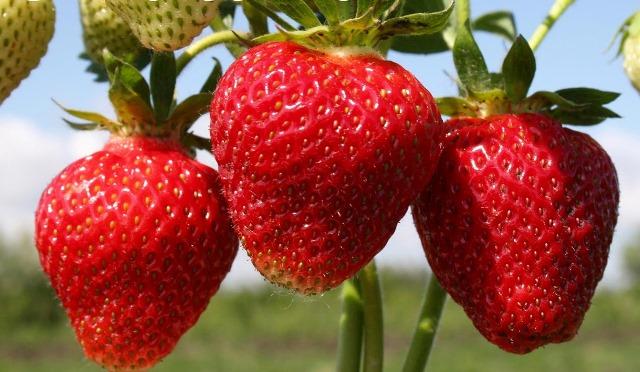
What are the characteristic features of the Elvira variety can be attributed to the disadvantages:
- This variety, like any other type of garden strawberry, requires constant care. In order for the bushes to please with a bountiful harvest, they must be watered and loosened almost every day.
- Plants planted in open, sunny areas can burn if they are not covered from direct sunlight during the hottest part of the day.
The subtleties of growing strawberries Elvira
To obtain the maximum yield from each bush, you must adhere to the rules that are most suitable for this variety. There are several points to pay attention to.
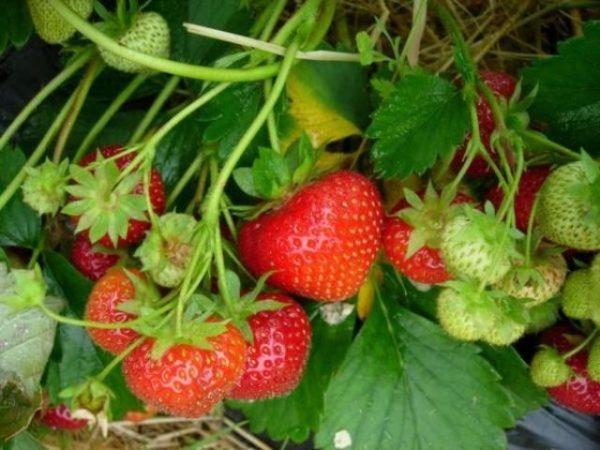
When is the best time to plant new bushes?
Plants can be planted both in autumn and spring.It is convenient to plant in autumn, since the beds can be prepared throughout the summer season. Young bushes planted in autumn, under favorable conditions, will yield the same yield as adult plants next summer. Young bushes planted in spring will give a good harvest only next year.
Preparation of planting material
The most competent way is reproduction by rosettes, more about it. To avoid degeneration of the variety, it is important to choose the right rosettes for further propagation. First, the mother plant is determined to obtain planting material. It should be a strong bush, leaves, stems and whiskers of which are not affected by diseases and pests. To make the formation more intense, peduncles are removed. Several rosettes can take root on each mustache, but for reproduction they take the ones closest to the mother plant.
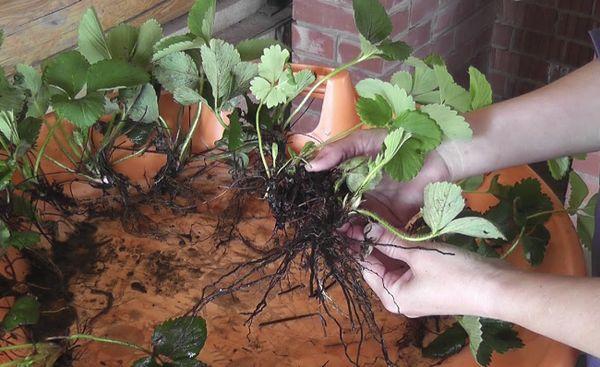
Before planting, the seedlings are carefully checked. Weak plants, as well as seedlings with damaged leaves and roots, are discarded. It is easier to eliminate the non-viable material at this stage.
If you follow these nuances, the characteristics of the variety will be preserved, and a good harvest will be obtained.
How and where to plant?
What factors should you pay attention to when choosing a landing site:
- The area should be slightly shaded - direct sunlight can burn out the plants. Well suited beds, which are illuminated in the morning hours, and in the hottest time remain in the shade. If there is no natural shade, the bushes should be protected from the sun during the day.
- The variety is unpretentious in terms of the moisture content of the site. Since the root system of the plant is weakly susceptible to rot, wet soils, as well as lowlands, are suitable for breaking the beds.
- Soil fertility does not play a big role for these unpretentious plants. Despite this, in order to obtain a good harvest, special attention will need to be paid to correct and timely feeding in the event that the soil is poor.
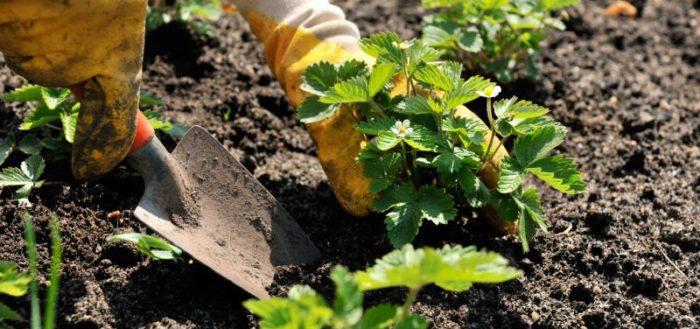
How to plant prepared seedlings correctly?
The seedlings are placed in a well-moistened well prepared. The root system must be carefully straightened out. The more water in the hole, the better the roots will be distributed. After sprinkling the roots with earth, the soil is gently slapped for a better fit and eliminating excess air. The growth point cannot be covered.
The holes are located at a distance of 25-30 cm from each other, the distance between the rows is at least 30 cm. There are staggered planting schemes, but this arrangement is less convenient for drip irrigation.
After planting in open ground, the soil can be mulched with sawdust or other suitable material.
How to care
To achieve maximum yield, one should not forget about the rules for caring for plants.
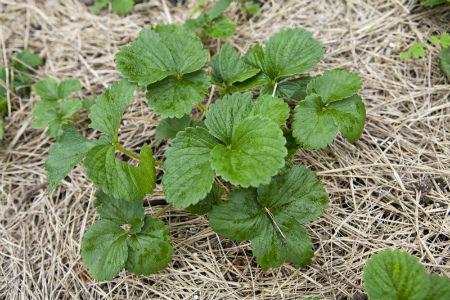
Top dressing
During the season, fertilizing is applied repeatedly. It is recommended to adhere to the following order in terms of application times and types of fertilizers:
- Before boarding. Mineral and organic fertilizers are used in the preparation of the beds for planting rosettes. Humus or compost is added under the holes, as well as wood ash.
- Two weeks after planting. In order to help the bush grow green mass, nitrogen fertilizers or ammonia are used.
- During the period of flowering and fruit formation, the plant needs phosphorus and potassium. At this stage, nitrogenous compositions are avoided so as not to provoke the growth of green mass.
- When preparing strawberries for wintering, the plants are again fed with phosphorus-containing fertilizers.
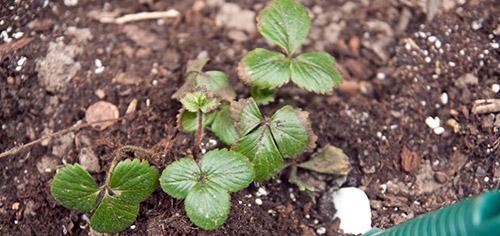
Watering, weeding, loosening
Despite the unpretentiousness of the Elvira variety, the main requirement for care is almost daily watering and loosening. Water the plant at the root. After irrigation, the soil is loosened to a depth of no more than 10 cm so as not to damage the roots. Loosening contributes to the saturation of the soil with oxygen, prevents moisture evaporation, and helps to eliminate small weeds.
Weeding the beds is required as needed. It is important to remove weeds in time so that they do not interfere with the growth of cultivated plants and do not favor the spread of diseases and pests.
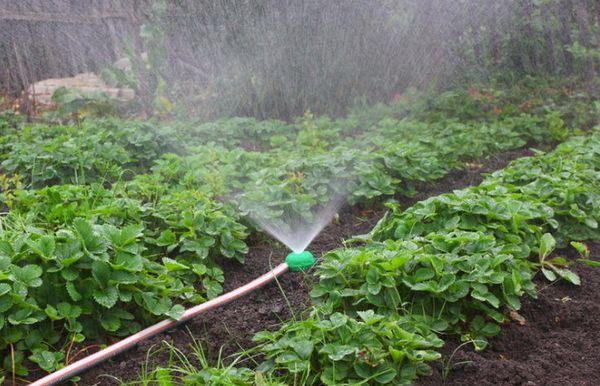
Pruning
Fruiting plants need to remove all whiskers to improve fruit formation and, accordingly, to obtain the maximum yield. If you leave the mustache, the plant will grow, and the garden will take on a sloppy and neglected look. Bushes selected for reproduction, on the contrary, have peduncles removed. At the same time, the plant forms a strong mustache capable of producing promising rosettes for maintaining the best characteristics.
Mulching
Mulching is required to retain moisture in the soil, prevent the growth of weeds, and in winter it saves plantings from freezing. Also, in some cases, it is used to improve the survival rate of plantings and to fight diseases. Sawdust, humus, straw are most often used as mulch.
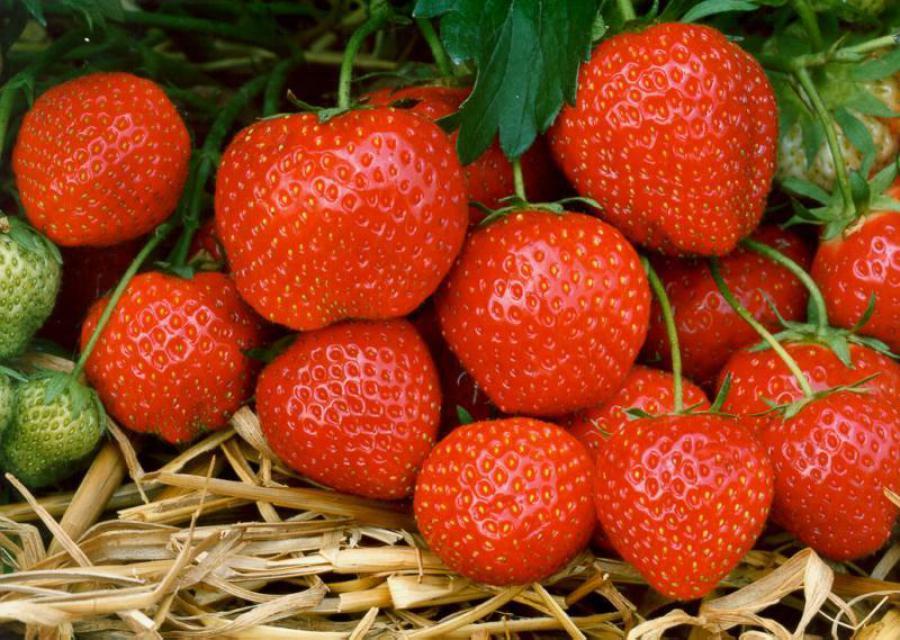
Shelter for the winter
Elvira strawberry winters well up to -18 degrees without additional shelter. If there is little snow in the region, and the frost is severe, it is necessary to cover the bushes either with natural material (as a rule, spruce branches, straw, tops are used), or with special agricultural coverings with the manufacture of an auxiliary frame.
Diseases
According to foreign and Russian experts, the variety is resistant to brown leaf blight and strawberry mite lesions, sensitive to powdery mildew, moderately susceptible to late blight (red) root rot, relatively resistant to gray fruit rot and verticillary wilt, and neutral to anthracnose.

Pests
The variety is considered to be less susceptible to pests typical for garden strawberries. However, the berries can be damaged or completely destroyed by birds or wasps. Methods of dealing with them are standard.
Breeding types
Strawberries are propagated in the following ways:
- seeds;
- dividing the uterine bush;
- mustache.
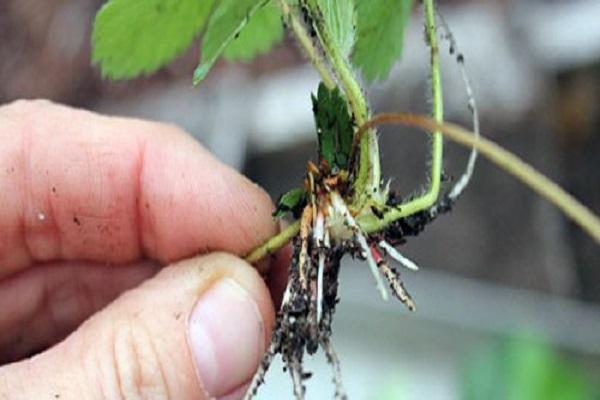
The last way is the most correct.
Harvesting and storage rules
The berries ripen in stages, starting in late spring - early summer. Collect them as they ripen. The collected fruits are stored for a long time, subject to the rules standard for garden strawberries.
When a new variety is bred, they try to improve its characteristics, adapt it to climatic conditions, make it more attractive for those who will grow and those who will consume the final product. Despite the fact that the Elvira strawberry was bred in the Netherlands, the Russians also liked it. It is not for nothing that gardeners affectionately call the variety Elechka.

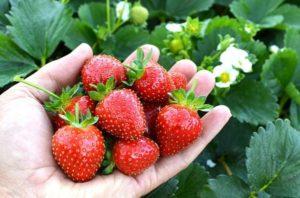
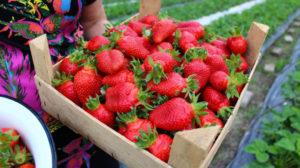
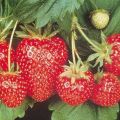
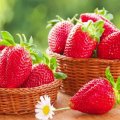

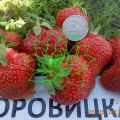
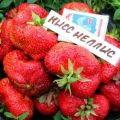
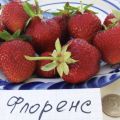
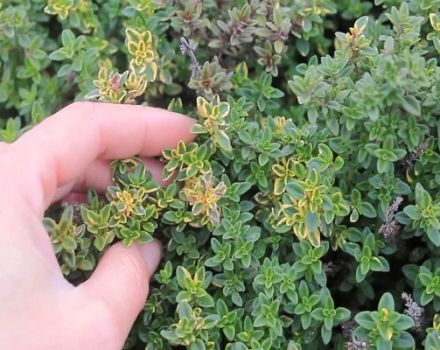
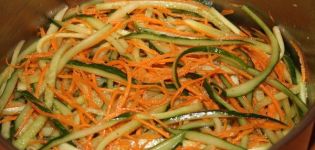
I have never had any problems with this strawberry. It grows rather quickly, the fruits are medium, very sweet and juicy. The yield is excellent. Only she grows on my site.